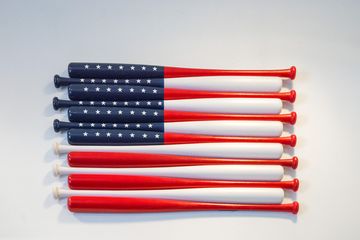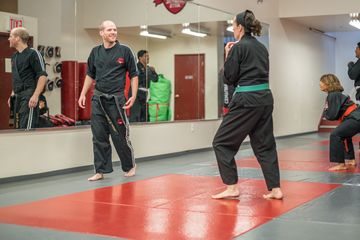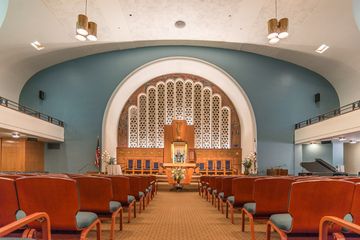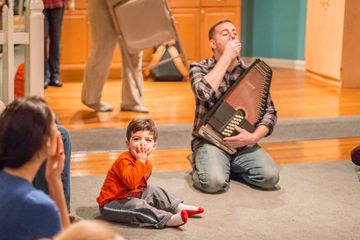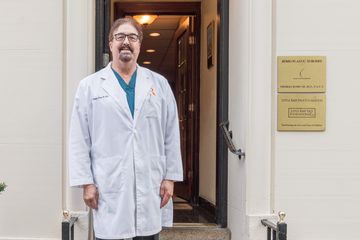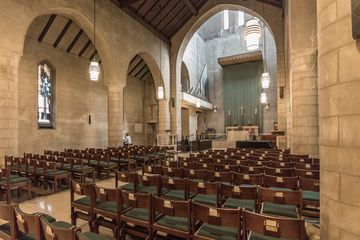When I visited the Center for Family Music, the home of East Side West Side Music Together, a class was just getting started. Danny, one of the program’s talented instructors, was leading a room full of toddlers and adults in a welcome song. Everyone sang “Hello everybody, so glad to see you, ” before specifically greeting all the “mamas, ” “nannies, ” “grandpas, ” and then each child by name. The entire group was welcomed and included in each part of the class, from the funny little noises made with mouths and hands between songs to the tunes themselves. I thoroughly enjoyed Danny's accompaniment on his autoharp as the class sang “This Little Light of Mine. ” Children were allowed to wander around and dance instead of being forced to sit still, but most of them sat with their eyes riveted on Danny or their parents, slowly catching on with claps and sounds. Fleur, the Center Manager, took me into the office, which will soon be partly turned into a space for birthday parties, in order to tell me more about what I had seen. Music Together is a worldwide music program for newborns through the age of five. It began in 1985 and is now taught in over forty countries. Fleur excitedly told me that the first Music Together had just opened in Sydney, Australia, thanks to a family that Fleur taught in New York: the mother loved the program so much that she became certified as a teacher and started a group when her family relocated. Music Together works by having the adults who take the class with the children model certain musical behaviors that the kids eventually copy. Semesters are long – ten to twelve weeks – in order to let the young students fully absorb the material. The program works through different “collections” named for instruments (I witnessed a class in the “Fiddle”). There are so many collections, Fleur told me, that a family can be in the program for three years before they get back to the original one. Even better, the Music Togethers around the world are always on the same collection, so if a family moves away, they can find stability in a new Music Together class, picking up right where they left off. The caretakers who accompany the toddlers make up a varied demographic (as the song said, from nannies to grandparents! ) and during weekend classes, Fleur explained, entire extended families sometimes show up to participate. Often in New York, it is a nanny who introduces Music Together to their families. Fleur went on to tell me that she once had a nanny say to her, “I’ve been doing Music Together for 23 years! ” She told me stories of how, in some cases, it is not just the kids who end up learning: For example, one father could not keep a beat, but had managed to teach himself to keep time with the others by the end of a Music Together semester. As Fleur pointed out, the classes are not about being good at music; they are about appreciating music, singing out, and introducing music into a child’s life. For that reason, tone-deaf parents who still sing their hearts out are some of her favorite people. The goal of Music Together, Fleur informed me, is to give kids “Basic Musical Competence” by the time they start school. This means being able to sing a song, keep a beat, and change the key of that song. Instructors never play an instrument more than three times in a class because, as Fleur pointed out, “You are the music maker. ” Music is known to activate more parts of the brain than any other activity, and so Music Together is not only giving kids the gift of music, but also preparing their minds for further learning. One thing Fleur emphasized about the program is that it is research-based and educationally-minded. She reminded me of the funny lip trills that I saw the kids doing. She demonstrated how a simple motion like that can activate the lips and tighten the diaphragm while still keeping it fun and silly for the children. This combination of learning and fun is why, in Fleur’s words, the program has “stood the test of time. ”The staff comes from a variety of backgrounds, but they appear to share two core elements: a love of music and a dedication to teaching. Danny has been teaching for almost twenty years, but has been performing professionally since he was seven years old. Fleur moved to New York City after going to school for acting. Music Together was brought to her attention while she was working as a babysitter, and she immediately decided to get certified. “I didn’t want to wait tables, I wanted to do this! ” she said, adding, “Once you’re in, you sort of drink the Kool-aid: You get hugs for a living! You’re around happy people for a living! ”I spoke with Deanna, the director, who started West Side Music Together in 1993 before uniting it with East Side Music Together in 2005. She was first introduced to Music Together as a mother. In 1992, when her oldest child was a baby, the mom’s group that she hung out with in the park suggested she take a class. She told me, “As a mom it made a lot of sense, and as a musician it felt really grounded. ” She added, “It was about all of us – not just about a teacher entertaining my kid. ” Deanna is a performer, but she took time off from auditioning when she became a mom. She thought Music Together was the perfect way to “keep [her] sense of herself” while taking a break from the theater world. She inquired about training and after getting certified, she decided to offer Music Together on the Upper West Side, where there was no outpost. She opened a little place on Riverside Drive with seven families and has since grown, thanks almost entirely to word of mouth, serving close to 50, 000 families since 1993. In the late nineties, Deanna partnered with her acting friend, Sally Woodson, who helped her to rent a space in her apartment building. Sally has sadly since passed away, but the space that she found is now the Center for Family Music. Deanna says that she feels especially happy to be offering this opportunity in today’s electronics-driven society. She pointed out that since kids and parents are always “Nose to nose with their electronic devices, ” it is easy to get disconnected from one’s own children. Music Together allows families to have “real quality time with their children in a musical setting. ” Deanna is also pleased that her own chapter of Music Together has spawned new centers around the country, an obvious sign that she is doing something right. She says that she encourages any curious family to come see what a class is like, because being able to have the musical experience is the best way to see what Music Together is all about. Deanna continues to thrive on her school, even (or especially) after over twenty years. “What more could you ask for from a career than to say you love what you do? ”
